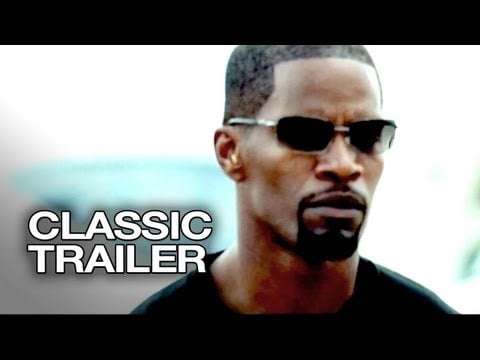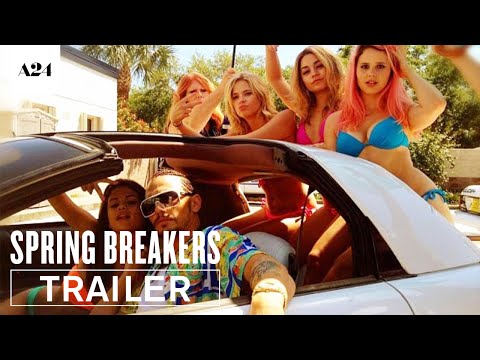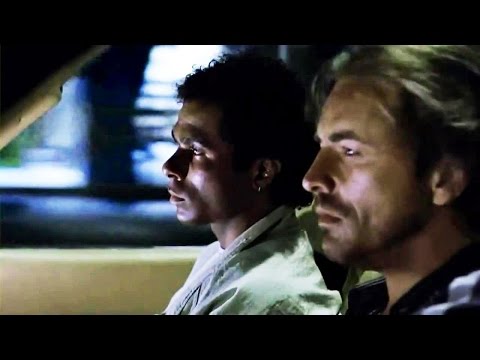Michael Mann’s ‘Miami Vice’ debuted in the summer of 2006 amid a flurry of ‘80s TV reboots to mixed reviews, but it remains one of his most challenging and visually engaging films.
“Way cool then, not so hot now,” read the headline for Pulitzer Prize-winning film critic Stephen Hunter’s Washington Post review of Mann’s ‘Collateral’ follow-up when it first hit the public.
Kurt Loder, then a critic for MTV, recalled the colorful and lively look of the original series and bemoaned the remake’s “grim” style, “joyless” characters, “sometimes impenetrable” dialogue, and “confusing” story.

At the box office, Mann’s picture didn’t fare much better. His serious redo of the show that launched his career mainly perplexed audiences. On a $135 million budget – the result of a production plagued with location issues – ‘Miami Vice’ brought in just $63.5 million domestically.
Internationally, it added another $100 million, but it was definitely not the response Universal wanted or anticipated, based on the heavy marketing and IP name.
Since its release though, “Miami Vice” has become one of Mann’s most talked about films.
Critic Stephen Hyden appropriately dubbed it “the most expensive art film ever made” in 2016. Other critics have similarly praised the movie’s visual style, dark undertones, and brutal action scenes. It even made Time Out’s list of 101 best action movies in 2014 in a poll conducted among directors, stunt professionals, actors and critics.
Filmmakers Harmony Korine and Jean-Baptiste Thoret have both praised the movie. Korine has said he often watches the film on mute to appreciate its visual nature more. He added it directly influenced the style of his 2014 cult hit ‘Spring Breakers,’ a very different movie set in Miami’s criminal underworld.

While some criticisms of “Vice” are entirely warranted, the contrast in its reception in 2006 vs. now is telling.
When most think of “Miami Vice” the TV series, they think of bright white jackets, speed boats racing against sinking sunsets, beautiful women walking Miami beaches, Phil Collins’ epic “In the Air Tonight,” etc. “Miami Vice” became a piece of American culture. It influenced style – for better or worse – for years and revitalized the city of Miami.
“Vice” was far more than fast cars, pretty women, and fantasy cops, though. It’s the show where Mann cut his teeth on the crime stories he would later master in films such as “Heat” and “Collateral.”
The show had plenty of its signature kitsch in those first Mann-run seasons, but it was also a far more layered and darker series than when he left, introducing two highly likable, but deeply flawed characters. They were underpaid civil servants asked to wear fancy clothes and drive expensive cars they could never afford to bust criminals who are seemingly replaced almost as quickly as they replace them.
Episodes often didn’t end with a victory, and Mann seemed to enjoy flirting with the moral grey area of his characters and the Drug War in general as much as he could on network television.

While others mainly did the winky-face television reboots with “Charlie’s Angels” or “Dukes of Hazzard,” Mann took the assignment of adapting his ‘80s series for modern day incredibly seriously.
He dropped the ‘80s style because, well, it ain’t the ‘80s. He simply updated the look of Crocket and Tubbs, threw them into the Miami of the 2000s, and then committed himself as totally as he did in the ‘80s to capturing an immersive and intoxicating world.
The pretty ladies are still around. The sinking sunsets. All of it. It’s just dialed up to 11 now that Mann can drop the restrictions of network executives and let his visual sense sprawl across the film.
Whatever you want to say about its story, “Miami Vice” looks good. Way good. Better than way good. It looks way, way, way good. It was made during a time that would soon begin its quick descent to death once Marvel began digital world-building with “Iron Man” and, eventually, “The Avengers.”
The idea that someone would give Mann $135 million to make a gloomy adaptation of what is largely remembered as a goofy TV series today is preposterous. Hence why it’s pretty safe to say that this is “the most expensive art film ever made.”
From speed boat races to rooftop screaming matches to Cuban clubs to shootouts in trailer parks, Mann knows how to shoot a movie like this. He keeps control of his digital cameras and fills his screens with depth and specific focus that add to the world.
The film’s actual story is where criticisms become understandable, if not justified.
RELATED: Defund the Police Celebs Fall Silent
Sonny Crocket (Colin Farrell) has a classic arc that feels pulled straight from the series. After he and Ricardo Tubbs (Jamie Foxx) are pulled into an undercover operation after an informant is killed (an easter egg name fans will either love or hate), Crocket begins falling for the boss’ second-hand (Gong Li).
This bit works. Li and Farrell are believable and Mann shoots them with enough eye-popping backgrounds that it doesn’t even matter if you understand the dialogue or not. Farrell especially does a good job of conveying the conflicted and sometimes devious nature of Crocket, something Don Johnson had down pat in the early episodes of “Vice.”
Other than the romance, it’s straightforward stuff that is often explained by characters in such specific cop lingo that it’s easier to sit back and appreciate than to try and follow every in and out. It is understandable, however, if this focus on style and characters in light of plot feels dense and off-putting to some.
The one aspect of the movie that is pretty indefensible is the role of Tubbs. Foxx is in great shape and he’s appropriately menacing in action scenes, but this Tubbs seems to have no relation to the character originally played by Philip Michael Thomas.
At least we can recognize the DNA of Crocket in Farrell’s performance. Tubbs has gone from a complex, but charming cop always ready to put on an accent for a crime boss to a guy who mainly looks stoically at other characters.
It’s not a terribly distracting flaw as this is technically Crocket’s story, but there does seem to be a disconnect in Foxx’s performance – behind the scenes stories suggest Foxx and Mann may have had some friction about the movie’s extensive globe-trotting shoot.
Another refreshing aspect to “Vice” is its lack of an obvious agenda. A film like this would trigger ‘Defund the Police’ crowds left and right. People can’t even handle a comedy about police today – see, the-soon-to-be-dead ‘Brooklyn Nine-Nine.
Mann never dives into the politics of the Drug War – something else that would no doubt inspire several dozen whining blogs today – but he is interested in selling the reality of it.
There is no doubt in his mind who the good guys are.
FAST FACT: The “Miami Vice” episode called “No Exit” featured an early appearance by future superstar Bruce Willis as an arms smuggler.
Made today with a studio, it’s likely the biggest note for Mann’s script would be dropping the south of the border baddies and only keeping the white supremacist henchmen working with them. It’s a consequence of a culture where a large portion of both political sides think cinema exists to validate certain beliefs about the world, rather than to challenge them by presenting nuanced and uncomfortable truths.
It’s inspiring to see that Mann not only had the financial freedom to make the movie he wanted to make, but also the freedom from the modern pressures of political correctness. It’s why “Vice” is able to say far more about its characters and world than a modern, wokeified, agenda-driven reboot likely would.
“Miami Vice” is a masterpiece. It’s not the movie adaptation everyone wanted, but it’s a dedicated, challenging, visually brilliant film that hyper-focuses on all of Mann’s favorite aspects of the original series. In 2006, many were questioning the decision to stick the showrunner of an ‘80s series behind a movie reboot in 2006, even if it was Mann.
Today, the filmmaker’s vision makes sense and feels even more profound than it did then. It only took years of Hollywood studios financing unoriginal, novelty-driven dreck and political correctness infecting the culture to realize it.
Zachary Leeman is the author of the novel “Nigh” and co-host of the “Man of Science, Man of Faith” podcast. He has covered politics and culture for Breitbart, LifeZette and others.
The post The Defund the Police Crowd Would Hate Mann’s ‘Miami Vice’ appeared first on Hollywood in Toto.
from Movies – Hollywood in Toto https://ift.tt/3y6wYDE

No comments:
Post a Comment